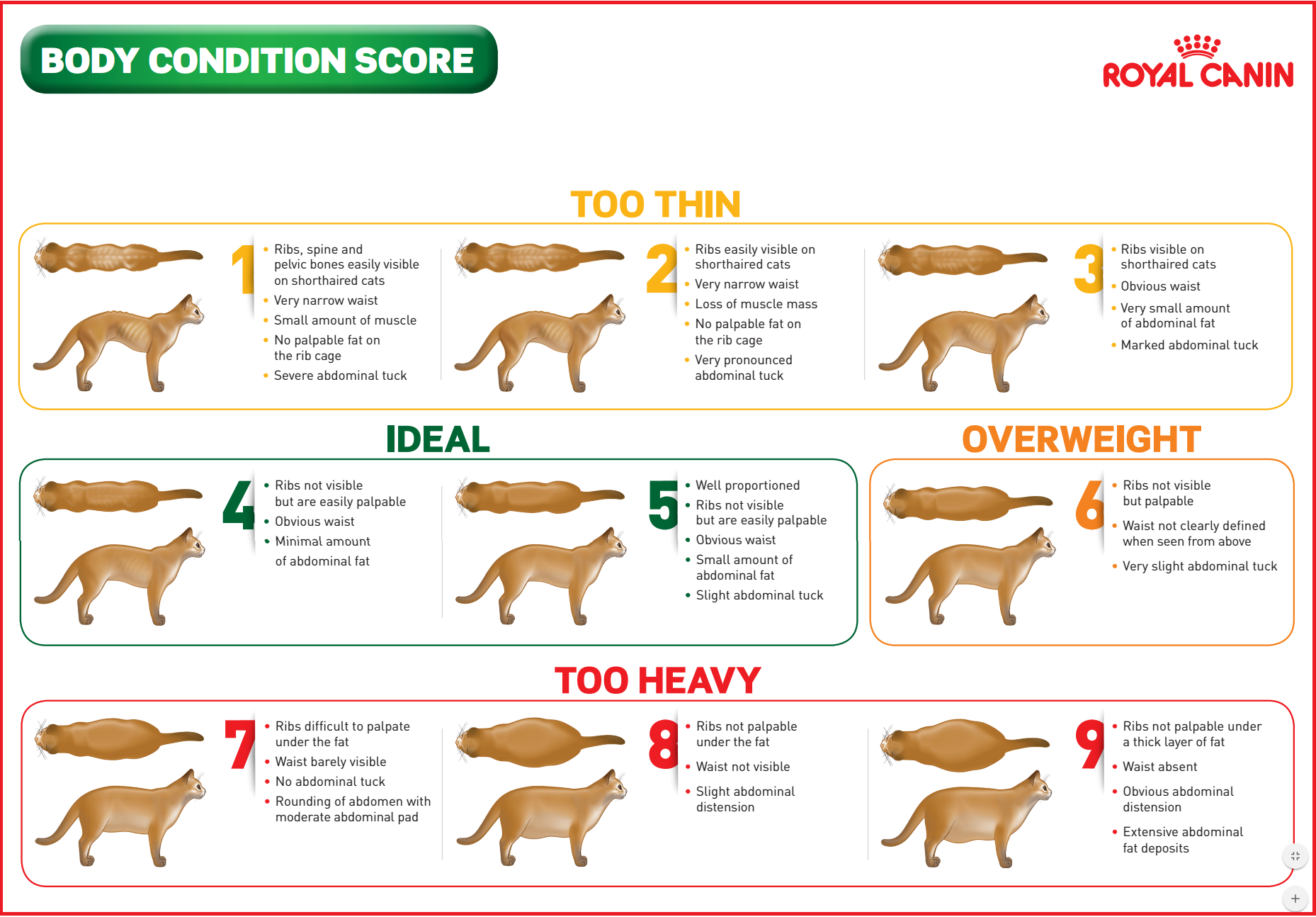Fat cats are cute, but not worth risking their lives. Pet obesity-related insurance claims have increased over 24% over the last eight years, according to Nationwide, a provider of pet health insurance. The company reports that nearly 20% of their members claims for 2017 were for conditions and diseases related to pet obesity, which amounted to more than $69 million spent in veterinary expenses!
As with people, excessive body fat in your cat increases the risk of preventable health issues and may very likely shorten the life expectancy of your cat.
The Top 10 Most Common Cat Obesity-Related Conditions:
- Bladder/Urinary Tract Disease
- Chronic Kidney Disease
- Diabetes
- Asthma
- Liver Disease
- Arthritis
- High Blood Pressure
- Heart Failure
- Gall Bladder Disorder
- Immobility of Spine
How do you know if your cat is obese?
Stand over your cat and look at its silhouette, and compare it to the body score chart below. A healthy body score is between 4 and 5.

What to do if your cat has a body score of 7-9:
- Change diet – to a high quality protein
- Increase the amount of canned food given
- Decrease the amount of dry food given
- Increase the frequency of feeding (4 times a day) – feed 1/4 of a 6oz can at each feeding
- Increase activity/exercise through prey play, leash walks, etc.
- Increase the cat’s feelings of security
If you have concerns about your pet’s health, see your veterinarian right away. Cats should have at least annual exams, and the older your cat gets, more frequent exams.





